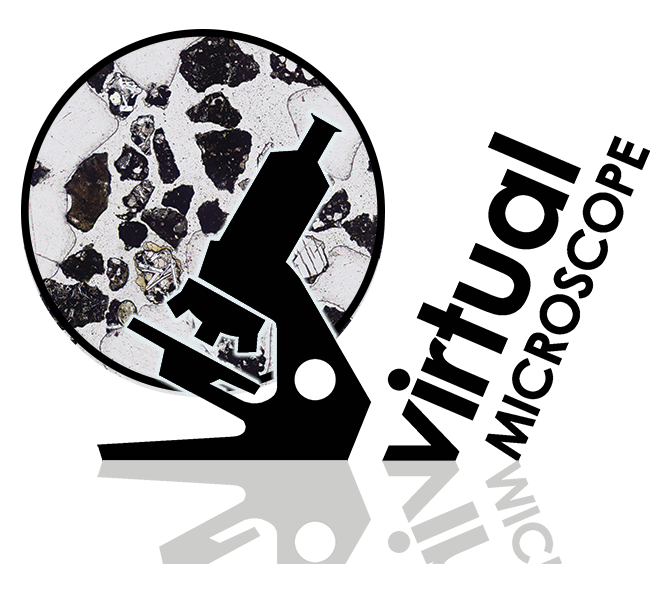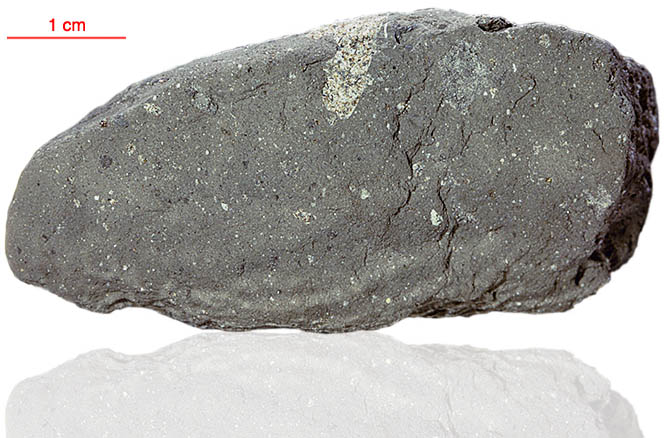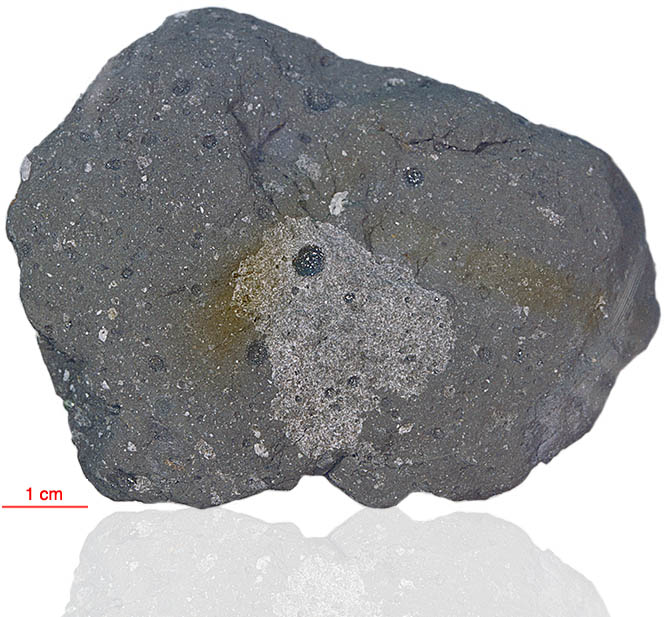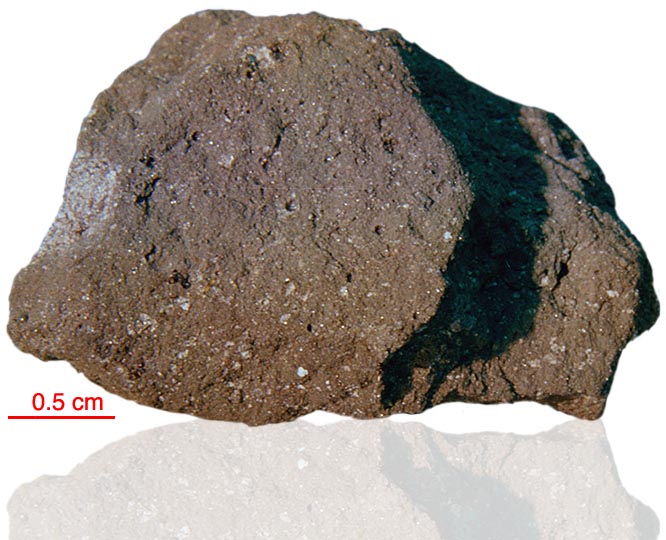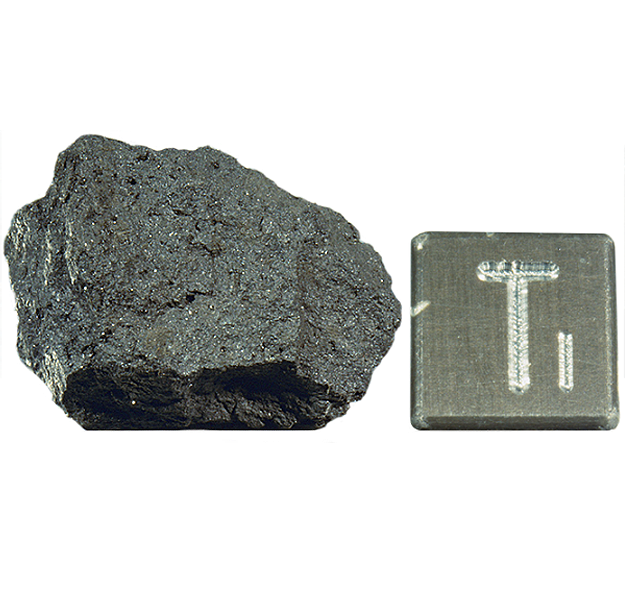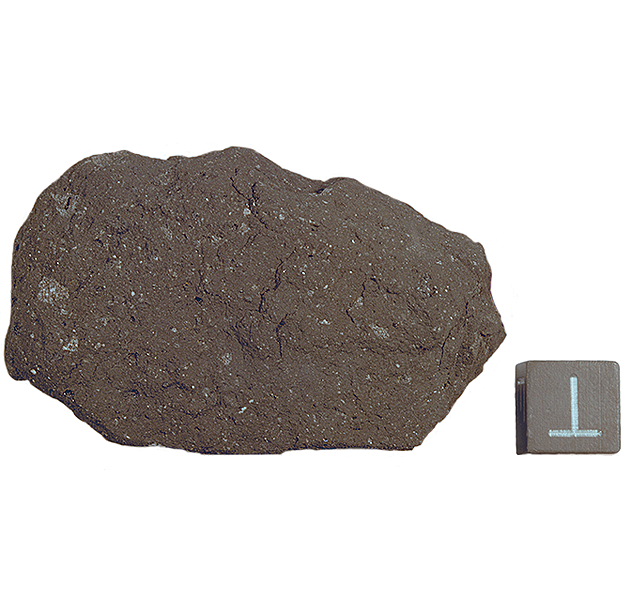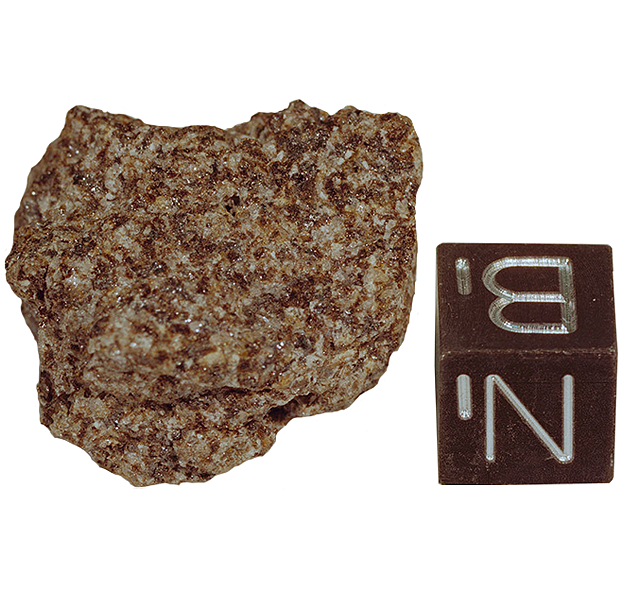
Fact sheet
10058 is a coarse-grained ilmenite basalt (weight 282 grams) that is 3.7 billion years old. It has also been described as a medium-grained, vuggy, ophitic, cristobalite basalt. The cristobalite is relatively abundant (modally 5%) and has a distinctive cracking pattern due to inversion of high to low cristobalite structure. Rotation 1 shows an example of cristobalite wrapping around ilmenite. Other crystals have lath-like form or appear interstitially. Cristobalite has the same birefringence as plagioclase feldspar so is not at first easy to see. Major constituents in the rock are pyroxene, plagioclase feldspar and ilmenite (modally around 94% in total). Accessory amounts of apatite, troilite, and a Y-Zr mineral (probably tranquillityite) plus a trace of glass are also reported. Pyroxene compositions vary with increasing iron content from augite towards the rare lunar species pyroxferroite. This is one of the rocks in which amphibole has been reported but we don't think it is present in our thin section. Please let us know if you spot it !
Further details of this and other Apollo samples are here: http://curator.jsc.nasa.gov/lunar/
The Apollo 11 samples create an iconic collection since they were the first rocks collected by humankind that were returned to Earth from another solar system body. The Apollo 11 team collected and returned 22 kg of rock and soil samples.
Apollo 11 launched from Cape Kennedy on 16 July 1969. An estimated 530 million people watched Armstrong's televised image and heard his voice describe the event as he took "...one small step for a man, one giant leap for mankind" on 20 July 1969.

